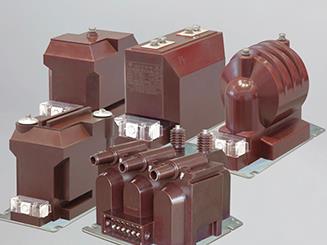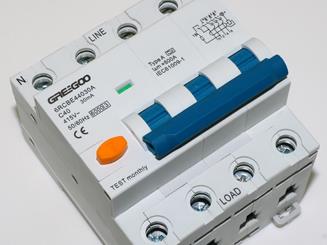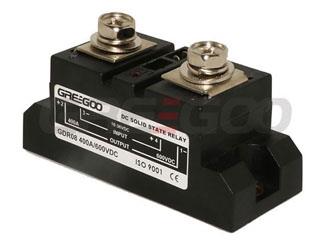Benefits of Pressure Contact Construction in SEMIPACK Thyristor Modules
Pressure contact construction, utilized in SEMIPACK 3, 4, 5, and 6 modules, establishes electrical connections through applied mechanical pressure rather than soldering or wire bonding. This solder-free assembly offers several advantages over soldered (e.g., SEMIPACK 1) and bonded (e.g., SEMIPACK 0, 2, 3) constructions, particularly in high-power applications such as converters, regulators, and industrial controllers.

Press contact dual Thyristor Module
Enhanced Reliability and Longevity
- Superior Power Cycling Capability: Pressure contact modules exhibit significantly higher load cycle endurance, withstanding a greater number of thermal cycles before failure. This is due to the elimination of solder joints, which are prone to fatigue from thermal expansion mismatches in soldered or bonded designs. Experimental data, such as LESIT curves, demonstrate that pressure contact types can achieve higher cycle counts under varying junction temperature differences (ΔT_j) and medium temperatures (T_jm) compared to soldered equivalents.
- Reduced Thermal Stress and Failure Modes: By avoiding solder layers and wire bonds, this construction mitigates issues like cracks, delamination, and heel failures, leading to improved long-term stability and service life. In failure scenarios, such as short-circuits, pressure contacts can form stable amalgams, allowing continued operation in series configurations.
- High Overload Tolerance: The design supports robust performance under high overload conditions, with low contact resistance ensuring stable electrical characteristics over time.
Improved Thermal Performance
- Optimized Heat Dissipation: Pressure contacts enable double-sided cooling, reducing thermal resistance by up to 50% compared to traditional soldered modules. The use of materials like aluminum nitride (AlN) insulating substrates further enhances heat transfer, supporting higher junction temperatures and power outputs.
- Lower Losses and Efficiency Gains: Larger contact areas minimize electrical losses, contributing to better overall efficiency in power conversion applications.
Electrical and Design Advantages
- Minimized Parasitic Inductances: Eliminating wire bonds reduces loop inductances (e.g., to 3–9 nH in comparable designs), enabling higher switching frequencies and reduced electromagnetic interference.
- Compact and Scalable Design: This construction promotes higher power density and a superior power-to-volume ratio, facilitating integration into space-constrained equipment while maintaining uniform current distribution across parallel components.
- Ease of Assembly and Maintenance: Solder-free mounting simplifies installation (e.g., using specified torque for M5 or M6 screws) and allows for easier disassembly or replacement without risking solder-related defects.
These benefits make pressure contact SEMIPACK modules particularly suitable for demanding environments, such as blast furnace controllers or welding equipment, where reliability under cyclic loading is critical.

Protective and Measuring Transformers for Medium-Voltage Equipment
Indoor support-type current transformer in block-type design
Read More
RCBO - electronic and magnetic type, type A and AC, maximum up to 40A
6kA RCBO, 4P/2P, type A/AC, 6A to 40A, electronic and magnetic tripping
Read More
12KV Vacuum Contactor with Vacuum Circuit Breaker Integrated - Frequent Switching under Higher Breaking Capacity 31.5kA
12KV 630A to 1250A 31.5KA Vacuum Contactor + Vacuum Circuit Breaker, frequently switching under high breaking capacity
Read More
DC SSR, Solid State Relay DC Load, DC/AC to DC SSR relay
10 to 2500A at 12 to 2000V DC to DC Solid sate relays, DC SSR, high current high voltage dc ssr.
Read More













